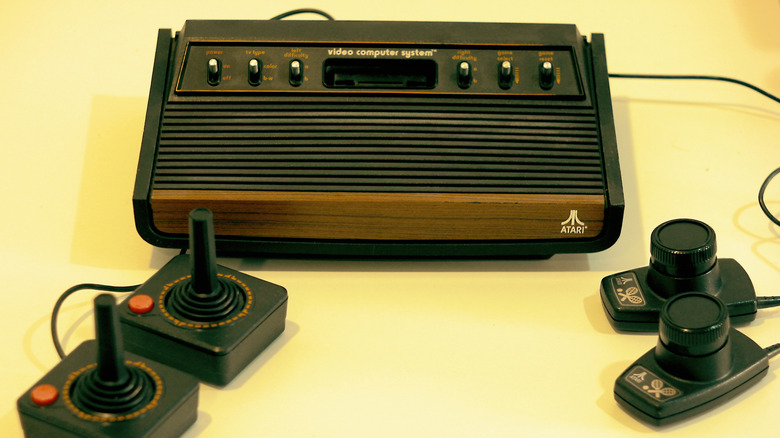
Wahyu Ichwandardi/Getty Images
There’s little denying that video gaming is an expensive hobby. Individual games can cost $70 brand new and there are dozens released every single week. While services like PlayStation Premium Plus and Xbox Game Pass can help you save money, their recurring subscription cost can add up after a while. And the prices of games are dwarfed by the price of the hardware needed to play them, with modern consoles all costing hundreds of dollars. In fact, your gaming consoles could well be the most expensive gadgets in your home. However, this isn’t exactly a new reality.
Advertisement
Some of the retro gaming machines that are still worth buying today were incredibly expensive when they first launched. Although the prices might seem relatively low, when you adjust for inflation, many were just as expensive as what’s in stores today. For example, the Super Nintendo Entertainment System was priced at $199 in 1991, but that would be the same as $459 after adjusting the figures for inflation. With that in mind, what console is really the most expensive? Let’s take a look.
For this article, we’ve taken inflation figures from both the U.S. Bureau of Labor Statistics and Inflation Station to get accurate data regarding how the console prices would translate if they were released today.
Advertisement
10. Xbox One
Marking Microsoft’s third entry into the video game console market, the Xbox One was part of the eighth generation, competing against the PlayStation 4 and the Nintendo Switch. The system faced a backlash from gamers immediately following its announcement due to restrictive features that Microsoft planned to introduce but largely abandoned before it even launched. These included limiting used game sales and requiring an online check every 24 hours. Launching in 2013, the Xbox One failed to recover from its controversial start and lagged behind its competitors.
Advertisement
The Xbox One launched with a price of $499, a full $100 more expensive than Sony’s PlayStation 4. The price discrepancy was due in part to the console initially coming bundled with the upgraded Kinect camera system — something many gamers were not all that interested in. This was the most expensive Xbox system until the release of the Xbox Series X some seven years later. When adjusted for inflation, the price equates to $674 today.
9. PlayStation 5 Pro
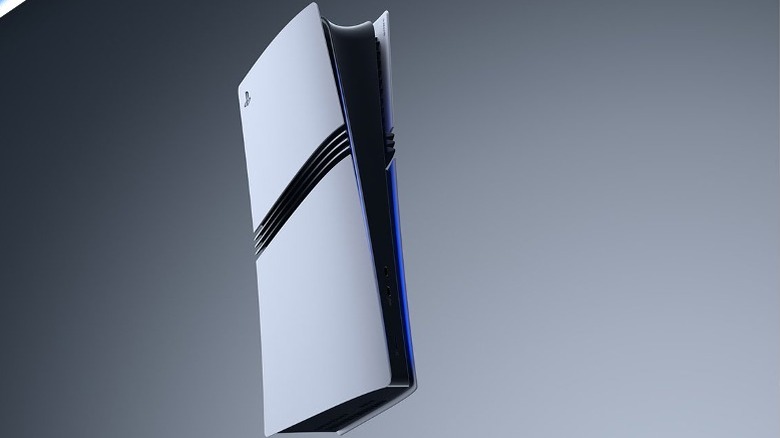
Sony
The PlayStation 5 was already one of the priciest PlayStation consoles when it hit store shelves back in 2020 with a retail cost of $499 (made easier to stomach with the $399 digital-only version), but gamers have become accustomed to seeing mid-generation refreshes for consoles bringing notable upgrades and improvements, and the recently announced PlayStation 5 Pro definitely fits that niche.
Advertisement
With a price tag of $699.99, this new console will probably be a difficult sell to those who already own a PlayStation 5 as that sort of cost is hard to justify. That’s especially true given that the new system doesn’t feature a disc drive or a vertical stand. The new features you can expect from the PlayStation 5 Pro include a 2TB internal SSD, along with improvements to the GPU and RAM. This should allow for games to run at a higher frame rate at 4K resolution with increased ray tracing performance, although how many people think these upgrades are enough remains to be seen.
8. PlayStation 3
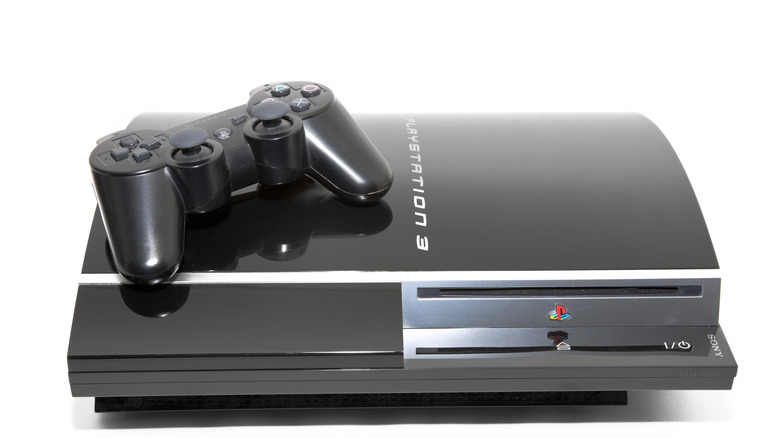
D. Lentz/Getty Images
The PlayStation 3 represents arguably the only time that Sony hasn’t had a dominant position in the gaming market since introducing the PlayStation brand. Although the console eventually surpassed the Xbox 360, it did so after years of being in third place behind the Microsoft system and the Nintendo Wii. Even though the PS3 had some forgotten but useful features, it failed to capture the imagination like its predecessors or successors (at least initially).
Advertisement
A large part of that slow start was down to a tricky launch. The console was released to stores in two versions, a $499 20GB model and a $599 60GB model. That made the PS3 at least $100 more expensive than the priciest Xbox 360 version and double the cost of the Wii. Customers were understandably wary of paying so much when rival consoles were vastly cheaper. Sony eventually conceded that the console was too expensive when it launched — with a price tag equivalent to $780 in 2024 — suggesting it was due to including Blu-ray capabilities in the system along with high manufacturing costs.
7. Sega Saturn
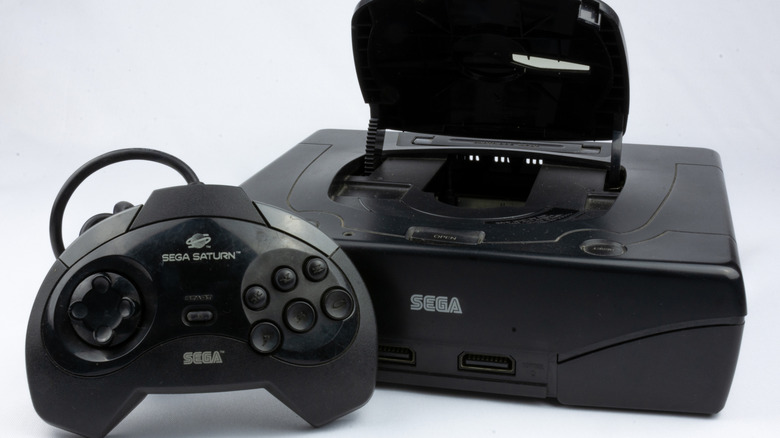
Luciano Marques/Shutterstock
By the time the Sega Saturn launched in 1994, Sega was not the force in the gaming industry it had once been. While the Sega Genesis had performed well against the Super Nintendo Entertainment System, the Sega Saturn simply did not match up with its fifth-generation rivals, where it faced stiff competition from Sony’s brand new PlayStation console and the Nintendo 64. This effectively started a process that led to Sega leaving the hardware business altogether, after the flop of its next console, the Sega Dreamcast.
Advertisement
The Sega Saturn launched with a price of $399, equivalent to $825 when adjusted for inflation. It was the most expensive major console the fifth generation, with the more successful Nintendo 64 and PlayStation selling for $199 and $299, respectively. Sega later lowered the price of the Saturn in an attempt to capture more market share but Sony and Nintendo were also able to reduce the price of their systems.
One of the main reasons why the Sega Saturn was such a commercial failure was the way that the company tried to get a jump on its rivals with a surprise launch. This led to problems when supply couldn’t keep up with initial demand and left retailers unprepared, damaging relationships.
6. Atari 5200
Despite being one of the early giants of the gaming industry and a well-known brand, you might be wondering what happened to Atari. A part of the downfall of the company was the failure of the Atari 5200 console, which was essentially an upgraded version of the 2600, with enhanced graphics and features. Launched in 1982, it was on the market for less than two years before it was discontinued. During that time, the video game industry suffered the infamous 1983 crash and Atari never fully recovered despite numerous hardware releases.
Advertisement
A huge system that could easily be confused for a piece of furniture due to its size, the 5200 stands as one of the biggest consoles ever made. There are a few reasons for this, such as the in-built controller compartment and the fact that larger cartridges and hardware suggested a more advanced gaming experience. All of that added up to an expensive console that cost $269 at launch, significantly more than its main rival the ColecoVision and even pricier than the NES that followed in 1985. In 2024 that amounts to a staggering $864 value.
5. Atari 2600
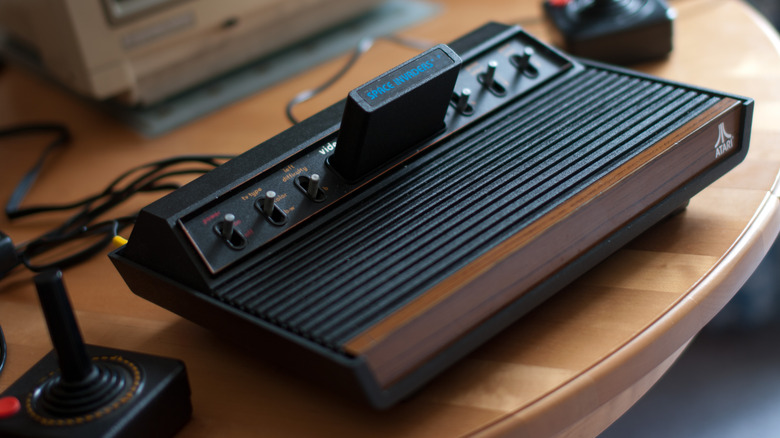
Robee Shepherd/Getty Images
Originally known as the Atari Video Computer System, this console was Atari’s first entry in the home console market after finding plenty of success with arcade releases. Launching in 1977, the Atari 2600 quickly became popular thanks to how many arcade hits were ported to it, giving players the chance to play games they already enjoyed at home. The console eventually had hugely popular games such as «Space Invaders» and «Adventure,» and it became the dominant platform in homes across the United States, selling an estimated 30 million units.
Advertisement
Like other consoles of the time, though, the Atari 2600 was not cheap. Video game technology was still very much in its infancy, and therefore costly to produce. Atari struggled to raise the finances to manufacture and launch the 2600, requiring a buyout from Warner and an investment of $100 million to get the system out the door. It cost $190 at retail, which equates to a figure of a little over $1,000 in 2024, although this did little to slow its momentum.
4. Intellivision
Competing against the Atari 2600 and the ColecoVision, the Intellivision was a second-generation home console. Like its rivals of the time, which either resembled toys or furniture with wood side paneling, it had a distinctive design. Production began in 1978, a year after the Atari 2600 launched, and the console was eventually released in 1979. Owned by Mattel, it was part of the company’s attempts to introduce interactive electronic toys to an older audience. To that end, it had a wide array of officially licensed sports games with impressive visuals, especially compared to offerings on the Atari 2600.
Advertisement
The Intellivision’s dedicated graphics ROM helped save memory, and the system also had a proper operating system, as well as a more advanced controller with additional buttons and a 16-way directional pad — all of which contributed to the console’s more sophisticated games. However, it also led to increased production costs and resulted in Mattel charging customers $299 for the console. That would cost gamers today in the region of $1,190. The console only managed to sell some 5 million units over the course of a decade on the market, due in part to its high cost. The lack of real success eventually led Mattel to sell its video game business.
[Featured image by Evan-Amos via Wikimedia Commons | Cropped and scaled | CC BY-SA 3.0]
Advertisement
3. 3DO Interactive Multiplayer
The 3DO Interactive Multiplayer emerged in the fifth generation of video game consoles, battling with the better-known Sony PlayStation, Nintendo 64, and Sega Saturn. While today it stands out as one of the discontinued gaming consoles that most people have forgotten about, it created something of a stir when it was launched in 1993. Manufactured as a collaboration between a number of brands, including Panasonic and GoldStar, the 3DO entered the market before its major competitors.
Advertisement
Hailed by Time Magazine as one of the best products of 1993, the console failed to capitalize on its early success before the PlayStation and Nintendo 64 released. These fresher systems rivaled the graphical and performance capabilities of the 3DO for a fraction of the cost. The 3DO sold for $700 at release, and despite price drops over the next few years, it was still much more expensive than the $299 Sony charged for the PlayStation and the $199 Nintendo charged for the N64. Adjusted for inflation, you get an idea of just how expensive this system was, coming in at over $1,500.
[Featured image by Evan-Amos via Wikimedia Commons | Cropped and scaled | CC BY-SA 3.0]
2. Neo Geo
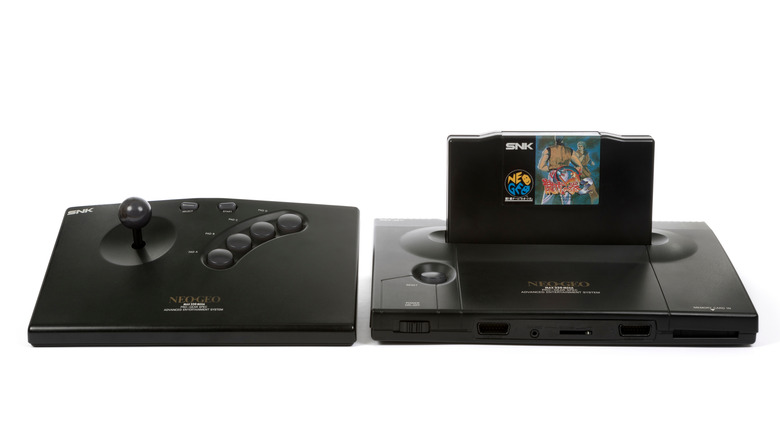
robtek/Shutterstock
Originally called the Advanced Entertainment System, the Neo Geo was a home release of the SNK Corporation’s arcade hardware that allowed operators to switch out cartridges to change games without needing to buy new cabinets. Developed as part of a strategy that would have seen people renting the systems, the hardware was notably more advanced than other consoles of the time like the SNES and the Sega Genesis.
Advertisement
This was a choice that SNK made so that it could port its arcade games directly to the home console without the need to alter them. Players could get exactly the same experience from a game whether it was played on the Neo Geo home console or at the arcade, with the same graphics and sound quality. All that top-of-the-line hardware meant that the system didn’t come cheap and customers had to pay $650 to get their hands on it as well as $200 for each game. In today’s money, that equates to a figure of more than $1,550, and around $480 per game.
1. Philips CD-i
The Philips CD-i is among the most ill-fated gaming systems ever to hit store shelves, but there’s more to it than simply a botched attempt to enter the video game market. The CD-i wasn’t actually a dedicated games console but more of a multimedia device that could play a variety of interactive content.
Advertisement
This included business software, encyclopedias, and educational content. Its best known, but still poorly received, video games emerged from a partnership with Nintendo. A failed collaboration between Sony and Nintendo to produce a SNES CD-ROM add-on and hybrid PlayStation console led to Nintendo pursuing a deal with Phillips — to disastrous results.
The nature of the CD-i as more than a console meant it was much more expensive than dedicated video game systems. Getting your hands on one in 1991 when they were released meant shelling out $799, over $1,800 when adjusted for inflation. This severely limited the appeal of the CD-i and even a price reduction of $200 not long after couldn’t make it competitive with cheap home computers available at a similar price point.
Advertisement